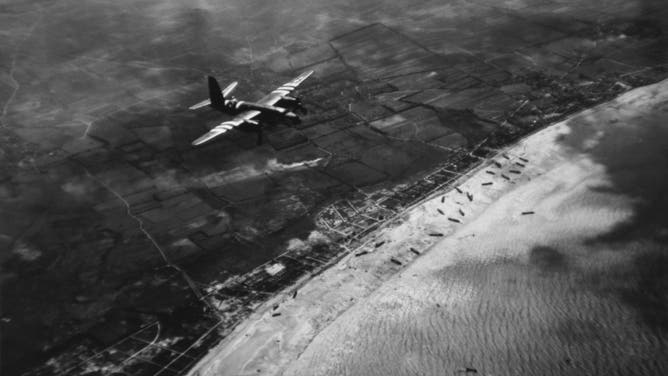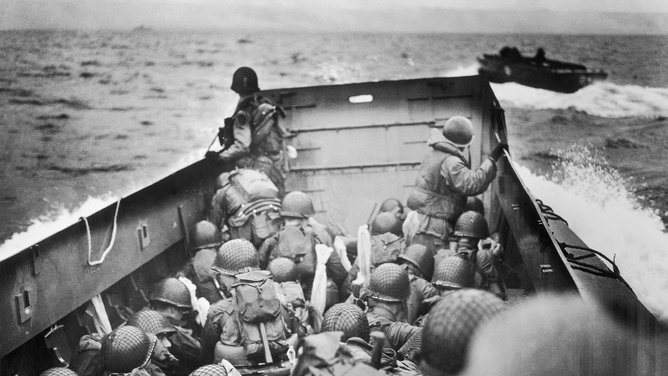How did weather influence when the D-Day invasion took place?
The perfect conditions needed for a successful invasion included the need for a full moon, high tide, clear skies and calm water – as calm as possible. And, those conditions were expected on June 5 and June 6, 1944.
Weather and war: The pivotal role weather forecasting plays in military operations
Thursday marks the 80th anniversary of the D-Day invasion in France, and the weather forecast played a crucial role in planning and executing the operation. Paul Walsh, the Managing Director of G2 Weather Intelligence, joined FOX Weather to explain why.
The invasion of Normandy in France was a pivotal battle during World War II, but D-Day could have had a different outcome or even been launched on a different day if it wasn’t for important information from meteorologists and the position of the Moon.
D-Day involved 150,000 Allied troops crossing the English Channel to invade Nazi-controlled Europe.
Troops would get to the beach via small wooden boats, which were flat-bottomed and had walls only 5 inches from the top of the water line.
And high seas in the channel would sink them.

A Ninth Air Force B-26 flies over one of the beaches during the invasion of Normandy in June 1944. (Photo by Jeffrey Markowitz/Sygma via Getty Images)
(Getty Images)
The site where the invasion would take place was picked because Allied planes could take off from Great Britain, make their bombing runs, and return on a single tank of gas.
However, those pilots needed to see the targets clearly, and low cloud cover would have made the mission impossible.
The Nazis also filled the water with mines, so the Allies needed to conduct the invasion at high tide.
The perfect conditions needed for a successful invasion included the need for a full moon, high tide, clear skies and calm water – as calm as possible.
And, those conditions were expected on June 5 and June 6, 1944.
General Dwight D. Eisenhower’s weather team was led by Group Captain James Stagg. He was a Scotsman who trusted the science and desperately tried to convince Eisenhower that a run of great weather in the area was about to change, and the forecasts he was receiving indicated June 5 would be too stormy to safely pull off the invasion.
But Stagg was up against men like Irving Krick, a sort of celebrity meteorologist who was an advisor to the film industry.

(Original Caption) French Coast Dead Ahead. Helmeted Yankee soldiers crouch, tightly packed, behind the bulwarks of a Coast Guard landing barge in the historic sweep across the English Channel to the shores of Normandy. Minutes later, these G.I. Joes dashed through the surf and up the beach under the withering fire of Nazi defenders. These Coast Guard barges rode back and forth through D Day bringing wave on wave of reinforcements to the beachhead.
(Getty Images)
He was old school and relied heavily on records of old weather forecasts to predict the weather.
Krick pushed for the invasion to take place on June 5, but Stagg won the day, and it was held on June 6.
Stagg gets a lot of credit, but he had help from Ireland.
And it would take decades before that thanks and appreciation would trickle down to Maureen Sweeney.
On the night of June 2, 1944, Sweeney reported bad weather in the region, and that information was then forwarded to Allied officials.
According to the BBC, Sweeney then received a call from someone with an English accent asking to confirm the weather report.
She did confirm the report, the invasion was delayed to June 6, 1944, and the rest is history.
